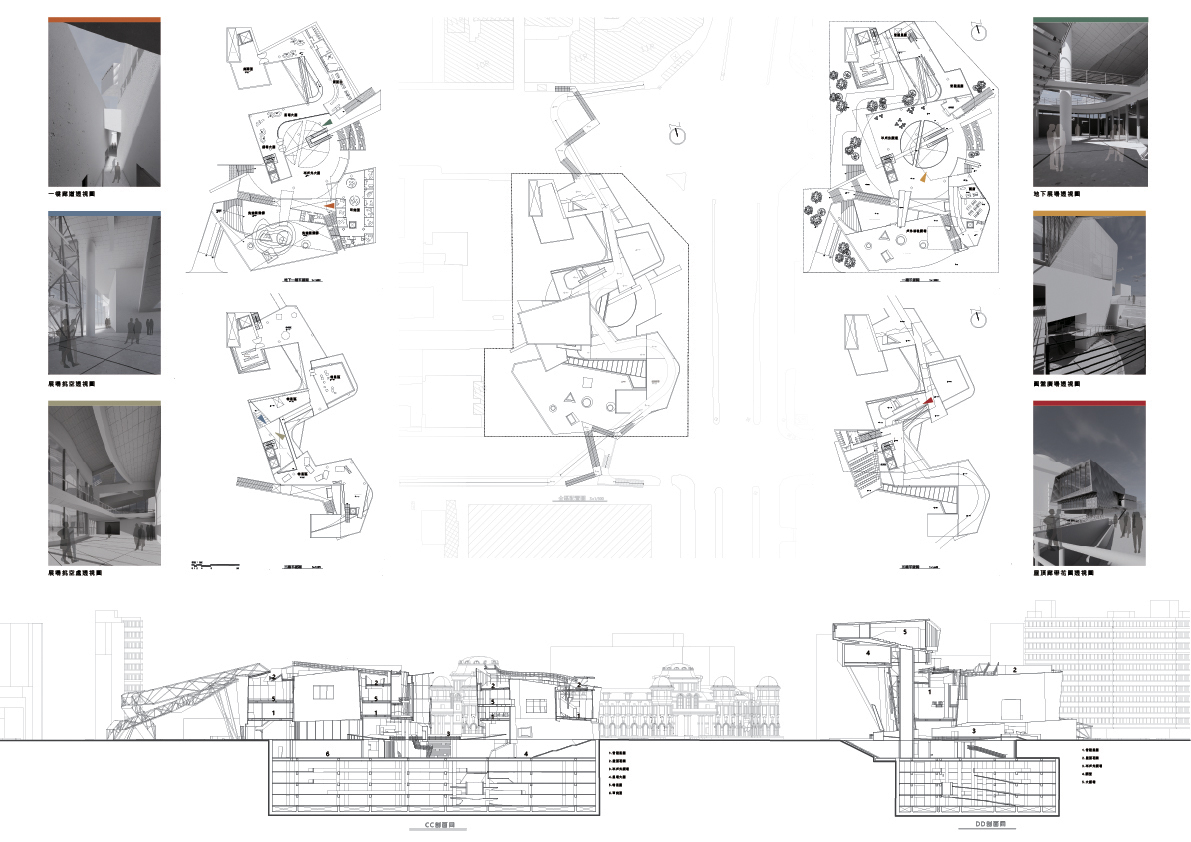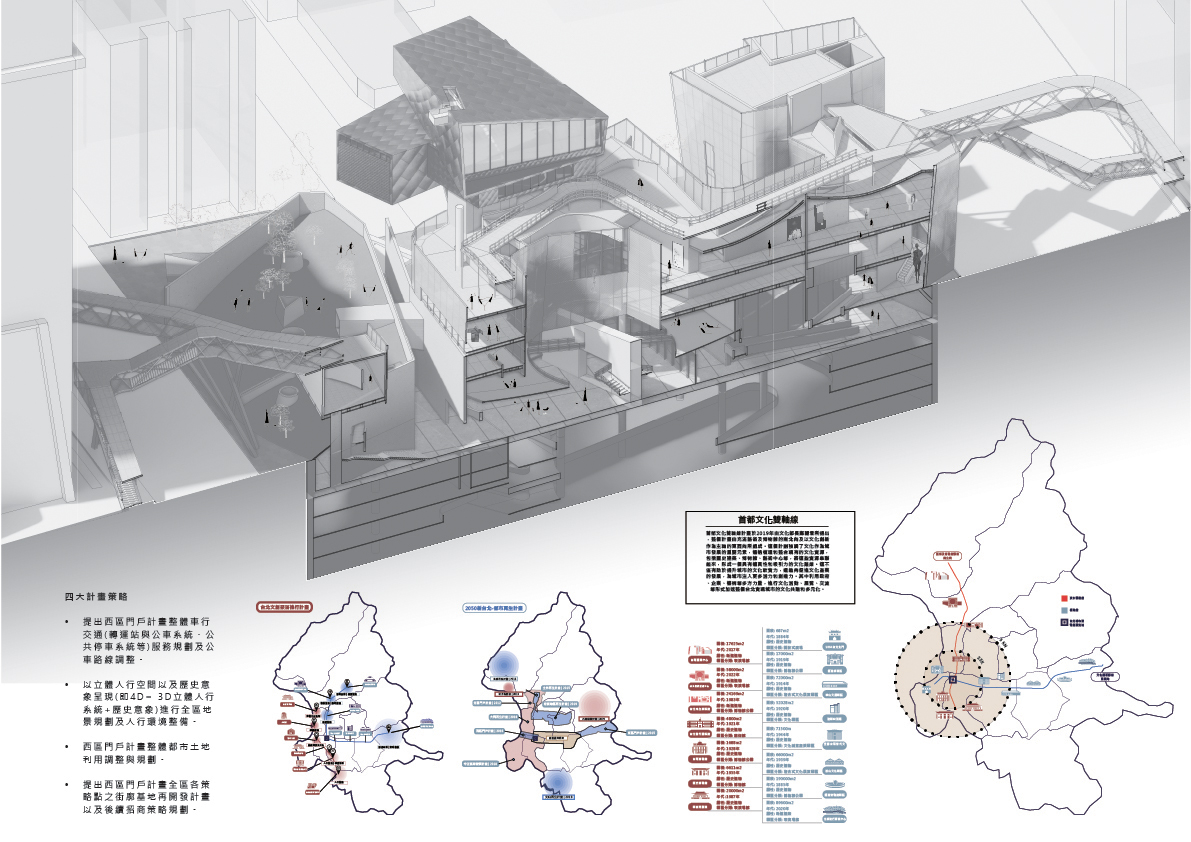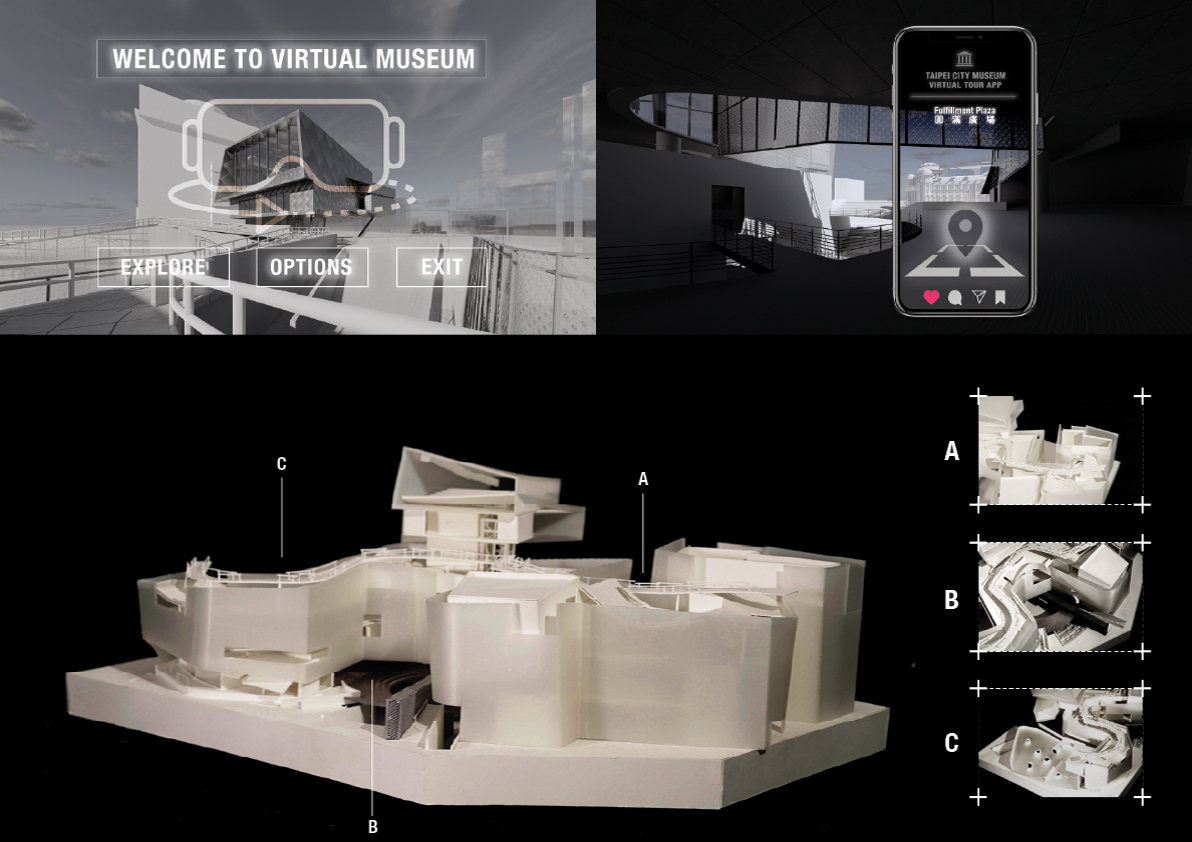




2023年「人類自由指數(Human Freedom Index, HFI)」中,台灣為亞洲區最自由的國家。生活在這片土地的人們來自不同地區的高山、平原、海洋,「自由」是將人們緊系在一起核心價值。而在台灣人追尋自由的歷程中,台北作為過去封建威權及現今的政治中心,是見證自由化推進的重要的場域。
從1980年代戰後經濟起飛之後,社會開始對威權體制產生質疑,再一次次的流血衝突之後,解嚴開放(1949-1987)使阻礙民主社會發展的高牆崩解,台灣才真正地體驗到解放體制後的自由。台北,作為台灣面對威權的第一線,來自台灣各地、抱持同樣理想的人們,他們對於自由的熱望一次次為理想抗爭,被各種文字、繪畫、雕塑等藝術創作刻印著。
2000年後,網路世代的來臨加速全球化的進程,雖然更多元聲音;然而,龐雜且瞬息的資訊流通與消逝,使得新世代雖享受過去民主自由抗爭的成果,但對其追求自由的歷程的理解不再深刻,甚至無法產生共感。這段記憶在歷史的流逝下,如同在墓園等紀念場域中不再被人記得石碑、雕像背後的精采故事。
了解台北在台灣民主化發展脈絡後,此設計希冀「城市博物館」除了作為「城市品牌與認同」、「文化觀光產業振興」等政治與經濟目的外,能夠作為連結城市及市民記憶的橋樑,使這座博物館具有一個觀察、紀錄及保存各時代人們對自由的表述的場域,體現公民之聲的可貴並促使民眾對自由價值的思辨。
「城市博物館」在「西區門戶計畫」的架構下,基地位在中山南路及忠孝西路的叉路口,兩條巨大的道路可追溯至清代台北城城牆所劃定出的統治邊界。這些城牆遺構與相鄰政府機關群所產生的無可名狀領域,在戒嚴後成為新世代人們陳述自由之聲的重要場域(從領域邊場域);因此,此設計將這道不在場的「牆」的置入於館內象徵權力的「翻轉」,並將不同時代以自由為主題的多元藝術創作做為空間亮點,除了對過去歷史的省思外,亦表達成自由價值可貴,塑造一座容納過去歷史、表現當代公民之聲價值,以及譜寫未來的「自由」場域。
To understand Taipei within Taiwan's context of democratization, this design proposes the "City Museum" as a political and economic instrument for "urban branding and identity" and "cultural tourism industry revitalization" and as a conduit connecting urban spaces with collective memory.
Situated within the "Taipei West Gateway framework," the museum's location at the intersection of Zhongshan South Road and Zhongxiao West Road traces back to the administrative boundaries delineated by Taipei City walls during the Qing Dynasty. These historical walls and the adjacent governmental complexes, formerly inscrutable domains, assumed pivotal roles post-martial law as significant locales for the new generation to articulate the voice of freedom. Thus, the design metaphorically "flips" these absent walls of power within the museum, highlighting diverse artistic creations centered around freedom across different epochs. Beyond retrospective considerations, the museum articulates enduring freedoms, shaping a space accommodating historical narratives, contemporary civic expressions, and future aspirations for freedom.